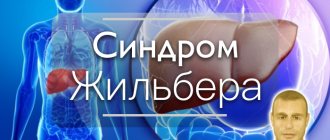Excessive cerebrospinal fluid as a cause of hydrocephalus
The anatomical structure of the head is designed to maximally protect the brain from external and internal negative influences. The very tissue of this vital organ is soft and vulnerable. Therefore, nature provided it with mechanical and biological protection - it was placed in the cerebrospinal fluid, the composition of which is close to lymph. It contains hormones, vitamins, minerals, organic and inorganic components, proteins, and glucose.
Performing a soft shock-absorbing function, the liquid acts as a barrier between the bone membranes and brain tissue.
Its quantity is clearly defined, and its synthesis functions are assigned to the choroid plexuses of the ventricles of the brain. Subsequently, it pours into the subarachnoid spaces, from them into the subdural spaces, then it is absorbed into the blood flow of the dura maters.
A normal physiological amount of such fluid ensures that the brain performs all the functions assigned to it. However, for certain reasons, its volume may increase, in some cases quite significantly. Then a diagnosis of hydrocephalus is made and a series of examinations are carried out to clarify the clinical picture.
Depending on the location of the excess volume of cerebrospinal fluid, hydraulic compression of various parts of the brain is observed , blocking the work of vital centers located here and causing certain symptoms.
Main symptoms
Replacement hydrocephalus of the external type in an adult in the first stages of development is asymptomatic, which without treatment leads to extensive damage and destruction of the brain. A disease diagnosed at an early stage is easier to treat, so it is important to pay attention to the symptoms:
- Migraine-like headache.
- Dizziness.
- Attacks of nausea and vomiting.
The external form of hydrocephalus of the replacement type, characterized by a moderate course, does not appear for a long time. As the disease progresses, it provokes the appearance of neurological syndromes:
- Short-term irritability against a background of prevailing apathy and depression.
- Epileptic seizures.
- Manic disorders, obsessions.
- Hallucinations, delusional states.
If the accumulated cerebrospinal fluid compresses the tissues of the cerebral hemispheres, cognitive abilities deteriorate (the process of memorization, mental activity), atrophic changes occur in the structure of the optic nerves, and malfunctions of the vestibular apparatus occur. As replacement hydrocephalus of internal or external type develops, symptoms increase.
Signs such as heart rhythm disturbances (arrhythmia, tachycardia), convulsions, paresis and paralysis of the limbs appear. When this moderately expressed replacement hydrocephalus of the external type develops into an acute form, a condition develops that threatens the patient’s life, which is reflected in symptoms - mental and motor disorders, ultimately provoking coma.
Symptoms of the disease in adults
The main signs of the pathology are identical to the manifestations of cerebral hypertension. Sluggish, moderate external hydrocephalus of the replacement type does not lead to life-threatening conditions, but is accompanied by symptoms:
- Atypical gait.
- Violation of gross and fine motor skills.
- Deterioration of mental activity, memory and speech functions.
- Psychosis, confusion.
Palsy of the cranial nerves is often observed, causing visual impairment. Muscle spasticity appears in the lower extremities. Signs can be severe or moderate depending on the nature of the disease. Occlusion (blockage) of the cerebrospinal fluid pathways provokes increased headaches, bradycardia (violation of sinus heart rhythm), and vomiting. In adult patients, there is no increase in head diameter.
Manifestation of pathology in a newborn
Hydrocephalus is diagnosed on average in 5-15 newborns out of every thousand. Due to the softness and pliability of the bony cranial structures in children, symptoms of cerebral hypertension rarely appear. Manifestations of the disease in infants:
- Increased head size.
- Swelling of the veins located in the scalp area.
- Thinning skin.
- Dehiscence of sutures between cranial bones.
- Protrusion of the fontanel.
The pediatrician and neurologist pay attention to the characteristic signs of disease progression in newborns: accelerated head growth compared to the norm, lack of pulsation in the area of a strongly protruded fontanel. With severe lesions, mental development slows down.
Older children develop minor deviations in mental activity - debility. Infants diagnosed with dropsy are inactive. At the first stages of development of the pathology, they experience excess body weight, and in the terminal stage – a sharp decrease in weight.
Where can fluid accumulate and why?
There are two options for its accumulation:
- internal, when a lot of cerebrospinal fluid is detected in the ventricles of the brain;
- external, when the location is the subarachnoid space - cavities occupying the space between the arachnoid and soft membranes.
The third option is a mixed form, affecting violations of its normal volume in external and internal structures. This is mixed hydrocephalus, which can be open or closed.
The difference between these forms lies in the mechanisms of formation of the so-called “surplus”. In one case, there is uncontrolled excess synthesis of cerebrospinal fluid, in the second there is an obstacle to its outflow. For differential diagnosis of these mechanisms, there are special instrumental examinations, the results of which determine the tactics of the prescribed treatment.
Diagnostics
In children, mixed hydrocephalus is diagnosed based on the results of X-ray examination and MRI. Methods are used to determine the size of the brain and fluid volume. In newborns whose fontanel has not yet become overgrown, an ultrasound examination is performed.
In patients with established hydrocephalus, the volume of cerebrospinal fluid in the cranium can be about one liter. The main diagnostic methods are:
- Angiography. A special contrast agent is first introduced into the body, which is reflected in the tomography image and allows you to determine the condition of the brain vessels.
- Magnetic resonance or computed tomography. They are among the most informative research methods, as they help to perform layer-by-layer scanning.
- Laboratory testing of blood and urine. Used to determine the presence of an infectious lesion.
A puncture is also performed. The procedure involves the collection of cerebrospinal fluid, which is sent for a cytological study aimed at establishing the presence of bacteria or altered composition.
Patients are prescribed a consultation with an ophthalmologist, endocrinologist and ENT specialist.
Only after receiving the results of all diagnostic measures, the specialist makes a conclusion and establishes an accurate diagnosis and determines the course of therapy.
What are the causes of the disease?
Moderate mixed hydrocephalus is a diagnosis that most often affects newborns. In certain cases, it may be associated with disproportionate development of the skull and soft tissues of the brain. In such cases, compensatory processes may occur as the child grows.
However, there are also more serious causes of pathology. Factors leading to the formation of excess cerebrospinal fluid in the brain include:
- hereditary diseases (such cases must be identified during pregnancy during genetic laboratory examinations);
- entry of infectious agents into the cerebrospinal fluid (more often such infection occurs in the prenatal period, from an infected mother, by a transplacental method);
- abnormal features of the structure of the skull that impede the free movement of fluid;
- intoxication of a chemical or biological nature;
- radiation exposure;
- birth injuries of the cervical spine;
- hypoxic phenomena in the fetus in the period preceding its birth (such reasons can be caused by vascular pathology during the period of its formation and development).
In addition to such hereditary causes, both children and adults may have acquired risk factors for developing the disease. More often these are head injuries, complications of infectious diseases such as meningococcal infection, viral encephalitis, tick-borne encephalitis, hemorrhagic fevers and others.
Acquired factors more often contribute to the development of hydrocephalus, caused by a violation of the free flow of cerebrospinal fluid, rather than by defects in its synthesis.
Symptoms of the disease
It is important to know about a disease such as mixed hydrocephalus of the brain, what it is, and what the signs (symptoms) of this disease are.
In a small child, including a newborn, dropsy is characterized, first of all, by the disproportionate size of the skull. Most often this is visible to the naked eye. Of course, only a qualified doctor can accurately determine the diagnosis. However, a sign such as a large head should arouse suspicion among parents.
In addition, childhood hydrocephalus has symptoms such as:
- Increased intracranial pressure (ICP).
- Constant crying and restlessness.
- Visible difficulty moving the head.
- Impaired coordination of the child.
- Convex fontanel.
- Seizures in the form of convulsions, rolling of the eyes, twitching.
- Involuntary tilting of the head, obvious impairment of vision and hearing.
All of the above factors should serve as a serious reason to consult a doctor. Nowadays, hydrocephalus is treated, however, a delay in seeing a doctor can cause the child to have serious developmental delays, weak intelligence and problems with independent life support.
For hydrocephalus in adults:
- Constant severe shingles headaches, migraines.
- Tinnitus, significant loss of vision and hearing.
- Difficulty moving the eyeballs.
- Loss of orientation in space, unexpected attacks of nausea, vomiting, drowsiness. These signs are more noticeable in the morning, immediately after waking up.
- Weakness and lack of initiative.
- In advanced cases, noticeable changes in behavior, decreased intelligence, and even the inability to answer a simple question are characteristic.
- Changes in the shape of the skull are also possible even in adults - most often a bulge forms in the forehead.
About replacement hydrocephalus
The mixed form of hydrocephalus, in which external mechanisms of its formation take place, in some cases acquires a replacement characteristic. This occurs as a result of the replacement of destroyed brain tissue with cerebrospinal fluid.
The actions of such negative factors as infection, family history, anatomical defects in the composition of bone tissues lead to the structural failure of individual sections of the membranes. Over time, such processes cause its complete destruction. In this case, the place of destroyed tissues is taken by cerebrospinal fluid. At this point we are talking about replacement hydrocephalus - a condition that greatly complicates the overall treatment regimen.
There is an opinion that such a disease, which has a completely different pathogenesis, is not hydrocephalus (dropsy) in its direct meaning . The goals of therapy are set differently, since often neither the outflow nor the normal synthesis of cerebrospinal fluid is affected. The processes of atrophy of the membrane tissue need to be corrected. And it is precisely them that the medicinal effect should be directed at.
If the patient’s condition is characterized as mixed replacement hydrocephalus of the brain, treatment should be comprehensive.
Classification of hydrocephalus
There are several ways to classify external hydrocephalus: open and closed, congenital or acquired, acute or chronic. It is also divided according to severity: severe and moderate external hydrocephalus of the brain.
Types by type and mechanism of development
Closed hydrocephalus is a disease in which the outflow of cerebrospinal fluid is impaired due to any obstruction. As a result, brain fluid does not enter the system.
The obstacle is located in different parts of the cerebrospinal fluid system. Pathology can be accurately determined only after diagnosis.
With closed external hydrocephalus, excessive accumulation of fluid occurs in the subarchanoid space and does not enter the systemic circulation. Causes of the closed form of the disease: tumors, cysts, narrowing of the aqueduct, hemorrhages, closure of the holes of Lushka and Manaji.
In this case, closed external hydrocephalus in adults can be severe or moderate. Hydrocephalus will develop locally, in the place where the obstruction appears. Neurological symptoms in the closed form of the disease occur as pressure increases.
Open form
Open external hydrocephalus occurs in adults when the absorption of liquor fluid is impaired, but in this case there are no obstacles to its movement. The movement of cerebrospinal fluid occurs as usual, but it is absorbed extremely slowly as a result of unknown factors.
With poor absorption of cerebrospinal fluid, intracranial pressure increases, which somehow contributes to its removal from some parts of the brain.
In the external form of the pathology in an adult, the subarachnoid space expands, and the brain gradually atrophies. The causes of this open form include: hemorrhages, metastases, meningitis, sarcoidosis and cysticercosis.
Very rarely, the cause is a tumor of the choroid plexus that produces liquor fluid.
By time of formation
Severe and minor external hydrocephalus can be congenital, acquired and replacement:
Purchased . Occurs after brain damage as a result of inflammation: encephalitis, arachnoiditis, meningitis, or under the influence of trauma, hemorrhages in the arachnoid membrane. With internal hydrocephalus, the ventricles are affected.
Also, the causes of acquired external moderate or severe hydrocephalus are: hemorrhagic stroke and tumor processes of various types, cysts, parasites that affect the brain.
Congenital . It develops only in children during development in the embryonic stage. It appears in the first months of a child’s life. Most often, the cause is malformations of the brain, which can be caused by fetal infections (toxoplasma, syphilis, rubella, mumps, cytomegalovirus), birth injuries and hemorrhages under the membrane of the cerebral aqueduct. Almost all congenital pathologies are of the closed type.
Substitute . A mixed form of brain pathology, not considered pure external hydrocephalus. It occurs against the background of brain atrophy, which reduces its volume. The balance between produced and excreted fluid is not disturbed.
Atrophy in replacement pathology is formed as a result of: vascular encephalopathy (a consequence of atherosclerosis or hypertension), age-related changes, toxic encephalopathy, Creutzfeldt-Jakob disease.
However, the classification of disease types does not end there.
The nature of the pathology
There are 2 types of disease progression based on intensity and duration. Acute hydrocephalus develops rapidly, symptoms intensify over several days. Most often it is closed and requires an emergency neurosurgical operation - brain bypass.
The chronic form develops gradually - from 6 months to 2-3 years. The patient’s intracranial pressure increases smoothly, no surges are recorded. In the chronic form, the symptoms are invisible at first, but when the pathology becomes severe, the signs of the disease become obvious. The chronic form most often occurs as an open disease.
Mixed form
Moderate external hydrocephalus or a severe form of the disease is an accumulation of cerebrospinal fluid in all layers of the brain: ventricles, cisterns, subarachnoid space. The severity of the disease is divided into 2 types:
- compensated form - excess fluid does not compress other tissues of the organ, there are no symptoms of the disease;
- decompensated form - excess fluid puts pressure on surrounding tissues, so signs of the disease form.
In the second type of pathology, symptoms appear gradually and lead to loss of performance.
Moderate and severe form
External hydrocephalus is divided into two more types according to the severity of the clinical picture and symptoms. The diagnosis of the intensity of the processes is made based on the results of MRI. In the external form of the disease, the subarachnoid space, interventricular septa and other parts of the brain are examined.
MRI diagnostics does not provide a comprehensive answer when making a diagnosis, since the human brain undergoes structural changes many times throughout life.
The diagnosis of moderate external hydrocephalus is made if, during 3 MRI sessions with an interval of 2-3 weeks, minor changes in the circulation of the cerebrospinal fluid were detected. If the changes significantly deviate from the norm, severe external hydrocephalus is diagnosed.
But changes in the volume of liquor structures can also occur against the background of other diseases. Therefore, the patient needs constant monitoring.
Clinical manifestations of mixed hydrocephalus
If the described processes are of a slightly pronounced degree, then the symptoms may be erased. The manifestations will be moderate and may not bother the person until the compensation stage moves into the next stage. If the pathology increases or replacement mixed hydrocephalus occurs, patients may complain of:
- intense headaches;
- nausea and deterioration of general condition;
- weakness;
- constant desire to sleep;
- difficulty moving the head;
- high level of intracranial pressure;
- visual and hearing defects;
- pre-convulsive state or convulsions and twitching (for example, eyes).
The child constantly cries, gets nervous, and cannot decide what he needs. It has a convex fontanel and what is striking as it develops is its disproportionately large head. Observing a baby under one year of age, you can notice:
- frequent regurgitation,
- mental retardation,
- inhibition of speaking function,
- in a dream, the child rubs his head on the pillow;
- increased muscle tone.
Older sick children are hyperactive, their nervous system is characterized by mild excitability. However, this alone cannot serve as a direct indicator of the disease. Perhaps the baby just has such a character. Only if there is a set of complaints, as well as examination results, can a diagnosis be made.
As for an adult with mixed hydrocephalus, he often experiences headache attacks after waking up. They are bursting in nature and spread over the entire surface of the head. At the same time, in the morning, the urge to vomit and vomiting itself are possible, despite the fact that the stomach is almost empty.
Particular complaints plague patients with replacement mixed hydrocephalus. In addition to severe headaches, they note:
- speech defects;
- twitching of individual body parts and even convulsive activity;
- inability to raise arms and legs due to weakness of the musculoskeletal system;
- memory lapses, especially for the previous period of time;
- loss of strength, reluctance to participate in active life.
As the condition worsens, the clinical picture may be supplemented by urinary incontinence, inappropriate behavior, and difficulties in being in society.
Symptoms
If the form of pathology is moderate, then it is not particularly noticeable. In the case of other varieties of this pathological process, the signs are more noticeable. Among them are high intracranial pressure, due to which the patient develops the following symptoms:
- Nausea to the point of vomiting;
- Constant drowsiness;
- Development of optic disc congestion;
- Displacement of brain structures;
- Severe headaches.
The most insidious symptom of these is drowsiness. It is not particularly noticed, but this symptom often appears before the onset of severe neurological symptoms.
Constant compression of brain tissue leads to the death of nerve cells and aggravation of the human condition. Headache with mixed type of hydrocephalus often appears after waking up, which indicates an increase in pressure inside the skull during sleep. If the patient has a mixed asymmetrical type of dropsy, then the pain is bursting in nature and covers the entire circumference of the head. Vomiting mainly occurs in the morning, almost immediately after sleep.
Mixed type hydrocele with atrophic changes can manifest itself as follows:
- Strong headache;
- Speech defects;
- Convulsive attacks;
- Paresis (weakness) of the limbs;
- Memory deterioration, especially short-term;
- Apathetic behavior.
Hydrocephalus has a progressive course, so as it develops, the patient’s mental activity decreases significantly. He may stop independently performing ordinary daily activities, for example, washing, eating, sleeping, etc. The person’s actions become inadequate, so he will have to be constantly monitored so that the patient does not harm himself or the people around him. In the later stages of hydrocephalus development, urinary incontinence occurs.
Brief description of diagnostic rules
A doctor who suspects a diagnosis of mixed hydrocephalus must take into account the clinical picture, analyzing it over time, the results of a visual and special (neurological) examination, as well as the conclusions of instrumental examination methods.
These include:
- magnetic resonance imaging (allows you to monitor the condition of the soft tissues of the brain, its ventricles, and notice areas of cerebrospinal fluid accumulation);
- Ultrasound examination of cerebral vessels (Dopplerography). If the child’s fontanelle is not overgrown, such an examination is carried out through it;
- the condition of the blood vessels is also examined using angiography (a method in which a special contrast agent is injected into the vascular bed, allowing a visual assessment of the completeness of the blood supply);
- X-ray of the skull;
- echoelectroencephalography;
- cisternography.
An examination of the fundus by an ophthalmologist, as well as consultation with an endocrinologist, is also necessary.
A certain criterion is the results of a general clinical blood test, as well as biochemical parameters. CSF may be collected for laboratory tests. So, its bacteriological analysis will show the presence of microflora (normally, the cerebrospinal fluid should be sterile), which served as the infectious cause of the disease. In addition, if the liquor is cloudy, then this is already sufficient evidence of its purulent nature.
Course of therapy and diagnosis
After identifying signs of hydrocephalus, the patient should immediately go to see a neurologist for diagnosis. In the case of infants, this diagnosis is quite simple to make due to the abnormally increased head circumference. However, an examination will only make it clear that the child is sick, but only with the help of instrumental examination methods can the cause of the problem be identified:
- Tomography (computer and magnetic resonance imaging). With its help, you can find out the cause of the pathological process and see the focus of the accumulation of cerebrospinal fluid;
- Cisternography. It is used to determine the type of dropsy.
To determine the cause of the accumulation of cerebrospinal fluid, the attending physician may also use an X-ray with a contrast agent and a neuropsychological examination. If the diagnosis is confirmed, a treatment regimen will be drawn up depending on the type of disease.
Mixed hydrocephalus can be treated in the following ways:
- Drug treatment. This therapy is suitable mainly for the relief of moderate and replacement hydrocephalus. In other cases, it is used as symptomatic therapy. Typically, drug treatment includes drugs to reduce intracranial pressure and diuretics;
- Shunting. It is required to eliminate the cause of the accumulation of cerebrospinal fluid, but is not performed for chronic hydrocephalus, as well as in the presence of inflammatory processes, vision problems, etc. Shunting shows the best effect when treating an asymmetric form. During the operation, the patient is given a drainage and excess cerebrospinal fluid goes into other cavities of the body. Usually, after the intervention, the patient’s condition quickly returns to normal, but over time, the procedure may need to be repeated to replace the components, especially in children due to their growth;
- Endoscopy. It is used to treat mixed, symmetrical and replacement dropsy. During the operation, the doctor, using micro-instruments, removes excess cerebrospinal fluid and the cause of its accumulation, for example, cysts or tumors;
- Ethnoscience. Treating it with prescriptions only allows for a slight relief of symptoms. Among the traditional medicines one can highlight herbs with a diuretic effect (oregano, parsley), as well as an alcohol tincture of calamus root and juniper berries;
- Diet. Hydrocephalus is an extremely severe pathological process, especially if it is of a mixed type. That is why it is important not only to use medications, but also to create the right diet. This measure is necessary to normalize the water-salt balance. Experts recommend completely eliminating foods that retain fluid in the body and eating more vegetables and fruits. It is advisable to cook only by steaming or eating boiled food.
The mixed type of hydrocephalus of the brain is a severe pathological abnormality, but if detected in a timely manner, it can be eliminated. If this is not done, the disease will progress. In addition to worsening neurological symptoms, the patient may develop dementia (dementia). If the problem affects a child, then inaction often ends in death.
How a treatment complex is compiled
The nature and extent of treatment depends on the stage of the process and the developed pathological symptoms. So, if the form of the disease is moderate, then it is enough to correct the condition with physiotherapeutic procedures and manual therapy. In addition, diuretic drugs are indicated.
If the infectious nature of the disease is established, antibiotics cannot be avoided. However, it is more correct to carry out a microbiological isolation of the culture (the microbe that caused the inflammation), and then determine in the laboratory its sensitivity to antibiotics. Then the treatment drug will work reliably and quickly.
If such a primary treatment complex does not produce an effect, then with a moderate clinical picture, you can resort to the help of drugs that stimulate cerebral circulation.
More serious stages of the process, especially if the fact of their acquired nature is confirmed, targeted treatment is prescribed, which must necessarily include medications that eliminate risk factors.
Types of hydrocephalus
A common symptom for all types of hydrocephalus is the accumulation of cerebrospinal fluid. Due to its accumulation, pressure on the brain increases, and mental and physical disabilities may develop due to brain damage. However, with high-quality diagnosis and proper treatment, the consequences of hydrocephalus can be minimized.
It is customary to distinguish the following types of hydrocephalus:
Congenital hydrocephalus , which is diagnosed in childhood. It may occur due to physical problems with the circulation of cerebrospinal fluid. The causes of this condition are identified as infection or trauma during embryo development, or the influence of a teratogenic factor. Hydrocephalus in children also occurs due to the presence of other defects, such as defects of the brain tube.
Acquired hydrocephalus can occur both at birth and later. Its causes are meningitis, wounds, hemorrhage, and malignant neoplasms.
Hydrocephalus is normal and occurs in older people. It can be successfully treated, but often causes dementia in the patient. This form of hydrocephalus often manifests itself as a consequence of head injuries, infections, and hemorrhages.
Vacuolar hydrocephalus is a consequence of blows, wounds and other brain damage. Often this phenomenon is not dangerous to health and, accordingly, does not require treatment.
When is surgical treatment used?
Patients with mixed hydrocephalus are constantly monitored by a neurologist. If during such monitoring it is revealed that the condition has worsened and the disease has entered an acute stage, emergency neurosurgical treatment is recommended. Operations can be divided into: bypass surgery and drainage.
Installing shunts in the brain is a complex process that often leads to complications. Any infection can lead to serious infections and the development of inflammatory processes. Drains help drain fluid, thereby reducing intracranial pressure . In cases where the possibility of outflow of cerebrospinal fluid is completely blocked, this is the only way out of the situation.
There is also an endoscopic method of providing assistance. With the help of an endoscope, penetration into the ventricles of the brain is ensured and a hole is made in them, through which the outflow of cerebrospinal fluid will flow. Endoscopic operations are most often used today as they are low-traumatic and have a low probability of bacterial complications.
Treatment method
Treatment of mixed hydrocephalus can be carried out medically or surgically. It is possible to treat the disease with medications only in the case of acquired dropsy, which occurs as a result of trauma to the skull, hemorrhage or infectious disease. Conservative treatment primarily includes the use of diuretics to remove excess fluid. Diuretics reduce the amount of cerebrospinal fluid, and then vascular therapy or, in the case of an infectious disease, antibiotics are prescribed. It is almost impossible to cure this disease with this therapy; it is only possible to slow it down.
But in most cases of mixed hydrocephalus of the brain, surgical intervention is indicated. If the outflow of cerebrospinal fluid is obstructed by a tumor, hematoma or adhesions, then they are completely removed. However, there are cases of their inaccessibility when removal is impossible. Then a shunt procedure is applied: auxiliary outlets are created for the cerebrospinal fluid. This operation is performed using trephination: the skull is opened, and a radiopaque catheter is inserted into the dilated cerebral ventricle. It is connected to a silicone hose, which is inserted subcutaneously. Next, the hose is brought into the cavity using a distal catheter. To regulate the pressure of the cerebrospinal fluid, a pump is installed on the shunt.
If the shunt is taken outside the brain, there are the following types:
- ventriculoperitoneal is inserted between the ventricle and the abdominal cavity;
- ventriculoatrial - between the brain and the right atrium;
- ventriculopleural – brain and chest cavity;
- venriculourethral – brain and urethra;
- ventriculovenous - injected into the veins.
Statistics show that bypass operations are accompanied by complications in 40–60% of cases. In the first year after surgery, various types of complications most often arise. There may be problems with the pump: it can pump either very quickly or very slowly. Parts of the shunt may become damaged or become infected. In any case, a repeat operation will be required, and possibly more than one.
If the shunting was carried out in the head itself (that is, internal), then the shunt connects the ventricle of the brain with the arachnoid cistern at the back of the head. This surgical intervention is performed using a neuroendoscope. A natural outflow of cerebrospinal fluid is created. Mixed hydrocephalus of the brain can only be cured through endoscopic surgery. Its advantage lies in the fact that there is no need to introduce any foreign bodies, as with bypass surgery, and this helps to avoid infections and also eliminates the breakdown of foreign systems.
Surgical intervention is the only correct method of treating mixed hydrocephalus, since medication provides only temporary improvement and does not eliminate the causes of the pathology. If you contact a specialist in time, carry out the correct diagnosis and proper treatment, then you can confidently count on a positive result, that is, recovery.
What does traditional medicine advise?
All recipes of traditional medicine come down to only symptomatic assistance to the patient. They do not solve physiological and anatomical problems, and therefore do not affect the cause of the disease.
In this section, diuretic compounds come first, for example, those based on cornflower, parsley, oregano, alcohol tincture of calamus root, and juniper berries. The functioning of the nervous system is normalized with the help of lemon balm decoction. It also reduces headaches .
A well-known plant that “fights hydrocephalus” is the marsh calamus. A decoction of the root of this plant cleanses the body and increases urination. You can prepare the medicine by pouring 50 g of crushed root with half a liter of vodka and letting it brew for 3 weeks. Take a teaspoon half an hour before meals.
Traditional healers recommend the following plants:
- astragalus (1 tablespoon per 200 ml of boiling water);
- black elderberry (effective for early stages);
- juice squeezed from garlic and radish in a one to one ratio;
- onion juice;
- raw pumpkin puree;
- buckthorn berries;
- horseradish root crushed into pulp (150 g mixed with juice squeezed from three lemons);
- birch buds and leaves (pour 2 tablespoons of the mixture with a liter of boiling water and leave for an hour).
Varieties
FGM can be congenital, acquired, or atrophic. The first type is detected at an early age, most often in infants. Acquired appears as a result of bruises and other injuries, some pathologies of an infectious nature. The atrophic form affects older people as a consequence of the death of brain cells.
The picture of external replacement hydrocephalus observed at a younger age differs from the disease diagnosed in older people. The reason for this phenomenon is that the brain in babies is just developing.
Doctors distinguish between types of pathology depending on their course:
- Closed (occlusive, non-communicating) – develops due to the blockage of the CSF pathways. This provokes a disruption of the normal flow of fluid. Most often, the pathway is blocked by a blood clot (the cause of which may be hemorrhage). Factors in the development of this type of pathology can be tumors or adhesions.
- The open (communicating, disresorbtin) form is detected against the background of impaired absorption by the cerebral venous system.
- The development of hypersecretory hydrocephalus most often results from increased production of cerebrospinal fluid.
- External replacement hydrocephalus of the brain appears if the cerebrospinal fluid volume exceeds the norm and it begins to accumulate in the subarachnoid space, and the tissues of the parenchyma (brain substance) change shape.
According to the state of intracranial pressure they are classified:
- hypertensive form (increased levels);
- hypotensive (low blood pressure);
- normotensive (at normal blood pressure).
According to time indicators, the process is divided as:
- acute form - the period when the first symptoms of the disease appeared and decompensation occurred for 3 days;
- subacute external hydrocephalus – the described process takes 1 month;
- chronic form - the pathology drags on for 6 months or more.
Based on its effect on brain functioning, hydrocephalus in older patients is defined as compensated and decompensated. Compensated pathology does not affect the state of health. With the decompensated type, the activity of the nervous system decreases, the brain loses its functionality. This type of disease is not affected by the amount of cerebrospinal fluid.
What is important?
For treatment to be effective, it must be carried out against the background of:
- compliance with the diet (water-salt balance needs to be adjusted);
- ensuring the absence of stress and sudden changes in climatic conditions;
- adults - get rid of bad habits (smoking, alcohol, fast food);
- sufficient exposure to fresh air.
Mixed hydrocephalus can be corrected if it is started promptly and professionally. Otherwise, negative consequences can lead to complete degradation and non-viability.
Consequences
Lack of therapy when mixed hydrocephalus of the brain is detected leads to the development of a number of complications. Among them are:
- Impaired quality of hearing and vision. In severe cases, their complete loss may occur.
- Dementia.
- Memory loss.
- Violation of certain brain functions.
- Death.
With the mixed form of hydrocephalus, the general condition gradually deteriorates. Symptoms become more pronounced. After a few months, the patient may begin to lose certain self-care skills. There is also a violation of memory and attention. It becomes difficult for a person to answer questions, even the simplest ones, and to correctly express his thoughts. That is why symptoms that arise should not be ignored, especially in children.
Childhood hydrocephalus causes physical, psycho-emotional and mental development. It is possible to cure the pathology, but only in the early stages of its development. But it is impossible to completely eliminate the accumulation of cerebrospinal fluid in the brain.
Hydrocephalus is not a rare disease that poses a danger to the life of children and adults. There are many reasons for its appearance, as well as symptoms. Treatment should be carried out in the early stages, since only complex and timely therapy will help avoid consequences, including death, and significantly improve the condition.
Symptoms of hydrocephalus
From the above, it is worth noting that the main symptoms of hydrocephalus are:
- Intense headaches
- Vomit
- Impaired movement coordination
- Increase in skull size in children
- Deep-set eyes
- Paralysis
- Mental instability and more
The disease differs in its symptoms in adults and children, but has similar symptoms.
Diagnosis of hydrocephalus
A doctor can diagnose hydrocephalus in children even during intrauterine development. For this purpose, ultrasound data of a pregnant woman is used. Also, this disease is detected at an early age during regular measurement of head circumference. If there are doubts about the correct development, the doctor may additionally prescribe an ultrasound examination of the baby’s head. If there are pathologies that are detected by ultrasound, the child is prescribed a set of further studies.
When adult patients or older children contact a specialist, the first step is to conduct a thorough examination, history taking, and physical and neurological examination. Then, if necessary, the doctor prescribes a computed tomography or magnetic resonance imaging scan for the patient. These examinations provide the doctor with images of the patient's brain. If hydrocephalus is suspected in adults, the patient is referred for consultation to a neurosurgeon.











